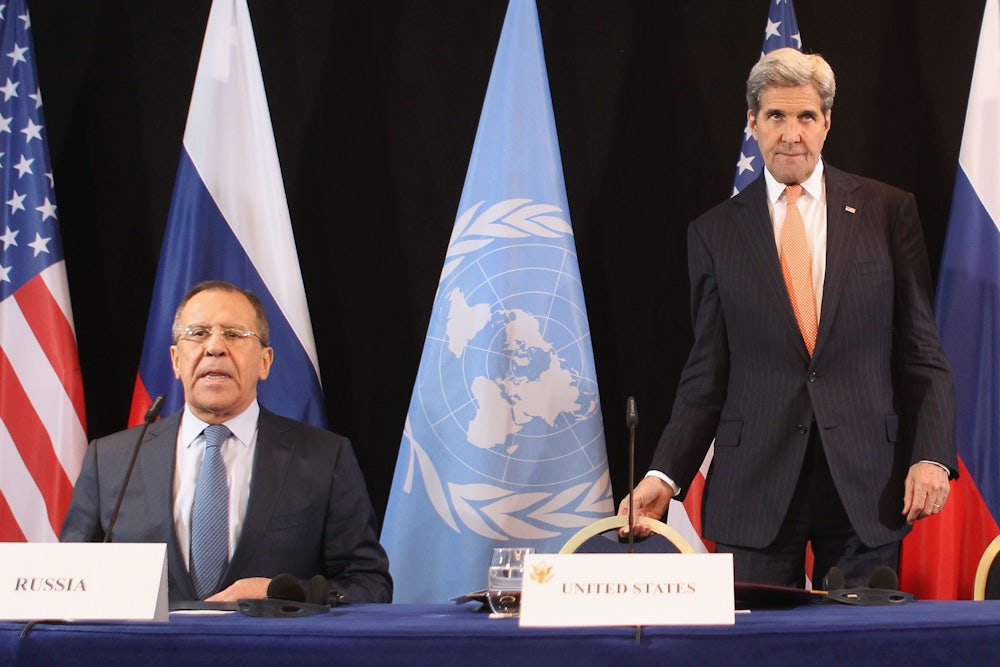On Thursday evening, U.S. Secretary of State John Kerry and his Russian counterpart Sergey Lavrov announced an agreement to deliver badly needed humanitarian aid to Syrian cities, to be followed by a cease-fire agreement that will begin in one week. If the cease-fire actually goes into effect—and there are plenty of things that could happen in the next week to prevent that from happening—it will be the first break in fighting since the Syrian civil war began in 2011.
As the New York Times notes in its report, “The cease-fire would essentially freeze in place the recent battlefield gains that President Bashar al Assad’s forces have made with the help of Russian airstrikes. The city of Aleppo, in rebel hands for four years, has been encircled by Mr. Assad’s troops and bombed by Russian aircraft.”
ISIS and Jabhat al-Nusra are not part of the agreement, so the cease fire is only partial: Fighting and airstrikes in areas occupied by those organizations will continue. Nevertheless, this agreement represents a sliver of hope for Syria, which is more than could be said for anything else that’s happened over the past five years.
